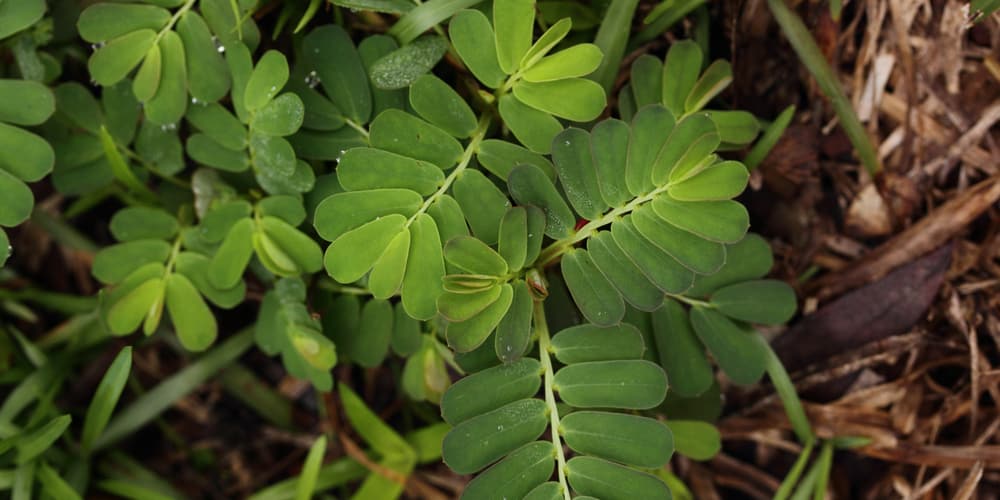So, you always dreamed of having the perfect lawn. And you are putting a lot of effort into keeping your turf healthy. But things do not go as you expect them. You may be wondering how to get rid of chamberbitter.
Don’t worry: this is not an uncommon situation! Indeed, there are many factors behind a lush and dense turf. While you can control most of them, dealing with weeds can be time-consuming (and quite daunting). Indeed, they might deprive your lawn of several essential nutrients (and affect its aesthetics).
But if you want to learn how to get rid of chamberbitter, you have landed in the right place! Here, we collected all you must know about removing this weed from your lawn. So, are you ready to start?
What Is Chamberbitter?
For those who don’t know this already, you can face several species of weeds in your garden. Each has different characteristics and will require species removal methods. Chamber bitter is a warm-season annual weed that attacks soils in the summer. Despite looking harmless, this plant develops strong roots that allow it to reproduce quickly.
This plan’s leaves are relatively easy to recognize: they look like those you find on a mimosa tree. In essence, they are bright green and oblong, with seeds growing on the lateral branches of the stems (which can be reddish).
If you live in a warm region, you’ll have to take an eye on this weed: it loves semi-tropical climates and will grow even in places suffering from periods of drought. So, you must take prompt measures to remove it from your lawn to prevent future headaches.
Usually, this weed emerges in May and June, when the soil temperatures are about 70°F.
How to Get Rid of Chamberbitter
After identifying the weed, you must know where on your lawn it is growing. Doing so will allow you to eliminate it. Also, it will help you assess the severity of the infestation, which will give hints about the measures you must take.
The truth is that chamber bitter is a challenging weed to remove. But of course, that doesn’t mean it’s impossible. You can manage it with a combination of manual and chemical control. Of course, the choice of methods will depend on your lawn’s conditions. But let’s analyze the options you have on hand.
Manual Removal
You can manually remove chamber bitter from your lawn when the situation isn’t too drastic. For instance, if you notice its appearance early on, you might be able to remove this weed in a few steps successfully. After knowing which spots of your lawn chamber bitter attacked, you can hand pull it. Since this weed doesn’t have rhizomes or bulbs, you shouldn’t find it too challenging.
However, you must ensure to remove the plant and all of its roots. Watering the lawn one day before manually pulling the weed might help. Indeed, it will soften the soil and facilitate the process.
Chemical Control
Of course, if the situation is out of control, you won’t be able to hand pull all chamber bitter from your lawn. In such cases, using suitable herbicides might be your best solution.
Don’t forget to wear protective gear when handling chemicals: they can cause skin rashes and irritation. Also, follow the instructions on the product label to avoid harming your lawn.
If you live in a region where summers are hot, it might be clever to apply pre-emergent products: they will prevent weeds from sprouting. And, as you may already know, prevention is often much better than cure! For these treatments, timing is crucial: you should spray them at the right time of the year to ensure their effectiveness.
Of course, not everyone can prevent the damage. But don’t worry: there are several post-emergent herbicides you can use to remove chamber bitter from your garden.
Keep in mind that established weeds are usually more challenging to remove. So, you have to be patient with the treatment. Also, select products that are suitable for your type of grass. And if you decide to use non-selective products, be careful about where you apply them.
Prevention
Proper lawn management will help you prevent the appearance of weeds on your turf. Mow your grass regularly to minimize stress and diseases. Also, do soil tests to ensure it includes all the nutrients your lawn needs to thrive and make the necessary amendments to avoid deficiencies.
You May Also Like: Are Snowball Bushes Deer Resistant


